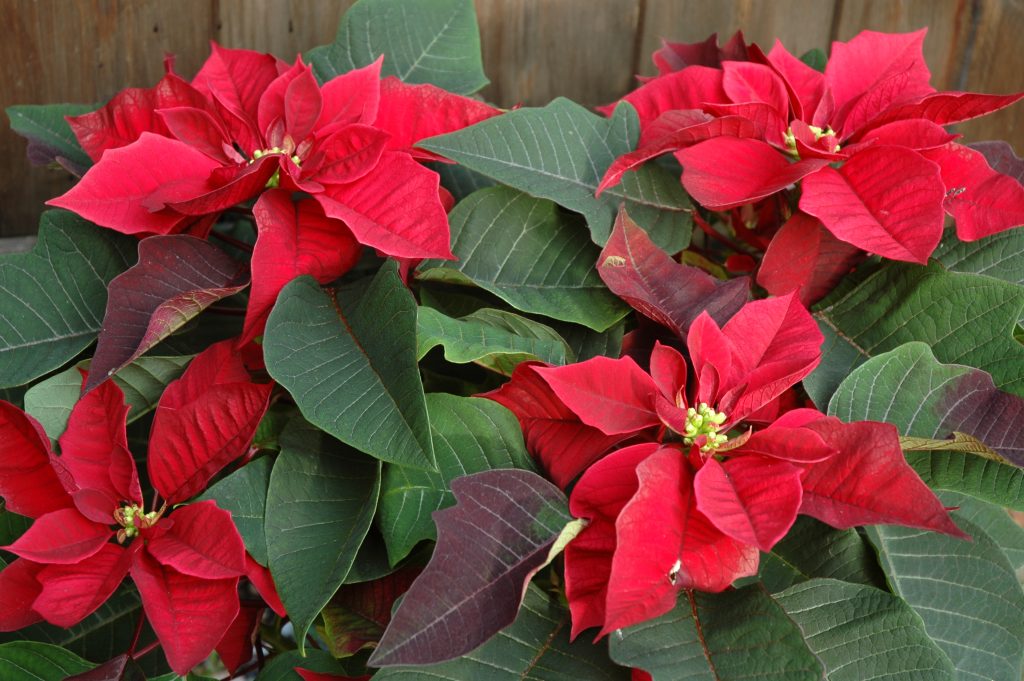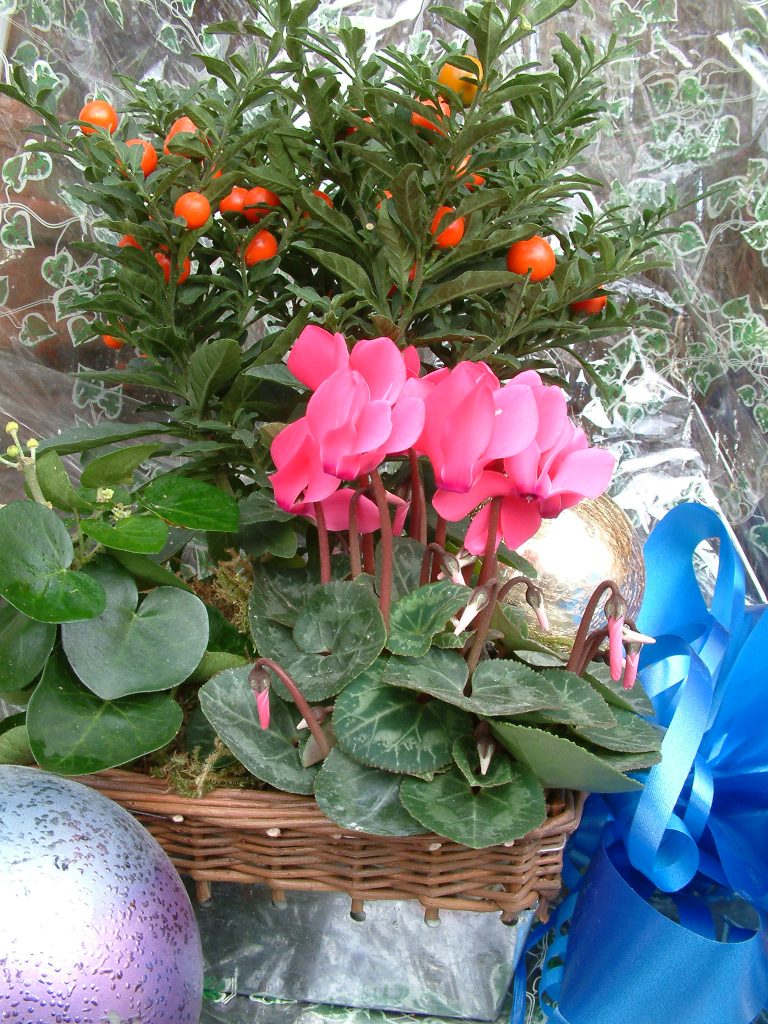
While this Festive season will not be quite the same as usual, there is reason to celebrate and a few Christmas pot plants are sure to lift the spirits. Like many people, I have a bit of a love/hate relationship with poinsettias.
Part of me hates the things and dreads the moment they appear in the shops. I try to resist their bright, vulgarness. I feel like I am at a party where I don’t want to be and am sulking in the corner with a bowl of peanuts. Most years I buy a poinsettia at about this time of year and am tempted by one of the less usual kinds, with white, pink or speckled bracts. Last year I bought a variegated poinsettia.
But as Christmas approaches I realise I have made a mistake. I will have a much better time if I join the party and get involved – I have to be there so I may as well enjoy myself. So my next visit to the garden centre is to buy a red poinsettia. Not just a tiny one as a token but a big, flashy, bold-as-brass, in your face, bushy poinsettia and then Christmas can begin.
In the 80s when I was at Nag’s Hall there was not the wide variety of plants for Christmas that are available now and poinsettias were very important, and most were red. We did have the cyclamen that Brian Knight had carefully nurtured for months and we would buy potted chrysanthemums from a local nursery, but poinsettias were what most people wanted.
I am glad that this is one tradition that has continued but now poinsettias are available everywhere.
Here are some tips for buying and keeping your poinsettia as healthy as possible:
Poinsettias like bright and warm conditions. They are very sensitive to cold and to draughts. They also hate sitting in cold water.
When they are sold they are usually in plastic sleeves, packed into boxes and shipped. The bracts can become damaged or chilled and will be marked if they are rained on. In addition, if they are in the sleeves for too long the lower leaves will go mouldy and drop off – check for mouldy and fallen leaves in the base of the sleeve. Do not buy plants if you spot this. Also feel how heavy the plant is – if it is light the plant is dry – if really heavy it will be too wet. Plants will usually recover if they are a bit dry but not if the leaves are starting to curl with drought. If plants are sopping wet the roots may be rotted and will not survive long.
The red bits on the poinsettia are bracts around the tiny yellow flowers. Look for unopened buds and if you see scars on the stem in the centre where flowers have opened and dropped the plant is not as fresh. But, the bracts will still last months after the true flowers are opened so you can’t blame this for your plant dying!
Locally produced plants will have had a shorter and easier journey than plants from across the Channel so always look for British grown plants.
Of course, it will be better to buy a plant that has been looked after rather than left on the shelf till sold so, and there is no surprise that I recommend this, buy from a garden centre, where staff will care about the plants, rather than a supermarket where often you see neglected plants dying on trolleys.
After buying, keep your plant warm and out of draughts. When you get it home, slit the sleeve at the base and pull it up over the plant. If you try to pull it out of the sleeve from the top you will damage the bracts and leaves and these marks will last all Christmas. Put it in a pot cover and place in a bright, spot, out of direct light and out of draughts. Do not put it by a radiator.
Of course you may not want your plant to last long but, if you do, make sure you water to keep it evenly moist. If it dries out a ‘tiny bit’ it will pick up when watered. But never allow it it sit in a puddle of water. Cool, boiled water is perfect but avoid cold water straight from the tap. There is no need to feed the plant at this time of year.
Are poinsettias poisonous?
Poinsettias (Euphorbia pulcherrima) are a type of euphorbia and these all have milky sap which is irritant to the eyes and broken skin. Poinsettias are mildly poisonous if eaten and may cause a stomach upset if several leaves are eaten but nothing more. They are not as dangerous as some other houseplants so they pose little risk in the home. Keep them away from small children and perhaps be cautious if you have a pet that may be inclined to chew your plant. I have enough trouble finding food that my cat will condescend to eat so I can’t imagine she will eat my poinsettia.
But be cautious if pruning or handling broken stems and leaves and wash your hands afterwards, following sensible precautions.
Next week: Other Christmas plants
